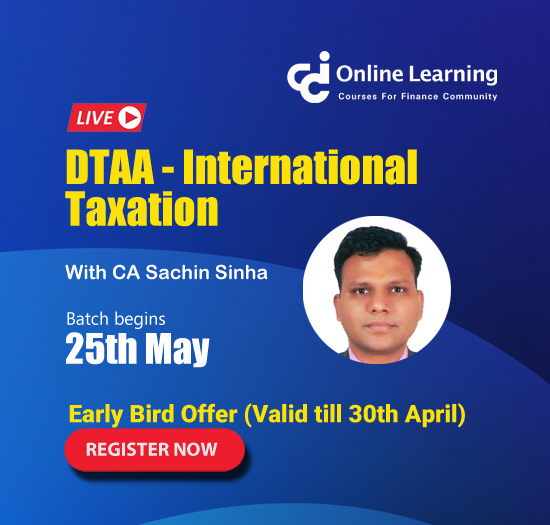Issued via Notification No. 30/2025 dated 7th April 2025, the CBDT has introduced significant changes to the Income-tax Rules, 1962, specifically for income tax assessments arising out of search and seizure cases under Chapter XIV-B of the Income-tax Act, 1961. This is effected through the Income-tax (Tenth Amendment) Rules, 2025, effective retrospectively from 1st September 2024.

Background and Legal Context
Under sections 132 and 132A of the Income-tax Act, authorities may conduct a search or requisition to detect undisclosed income. Post such action, taxpayers must file a special return for the "block period" under section 158BC.
This notification introduces Rule 12AE and Form ITR-B, providing detailed procedural guidelines and a new format to furnish return of income for such cases.
Key Highlights of the Notification
1. New Rule 12AE Introduced
This rule lays down the procedural aspects for filing a return post-search/requisition:
- Applicability: Applies to searches initiated or requisitions made on or after 1st September 2024.
- Form: Taxpayers must use Form ITR-B.
- Verification: Must be verified in the manner specified in the form.
2. Who Must File and How?
|
Category of Person |
Manner of Filing |
|
- Companies- Political Parties- Assessees under Sec. 44AB (audit cases) |
Electronically with Digital Signature |
|
Other taxpayers |
Either via:- Digital Signature, or- Electronic Verification Code (EVC) |
3. New Form ITR-B Structure
The ITR-B is a comprehensive form specifically designed for block period assessments. It includes:
A. General Information
Captures personal/organizational details, PAN, Aadhaar, address, employment status, and nature of entity.
B. Return Filing History
Details of returns filed for each assessment year falling in the block period (Y6 to Y0, and Y+1 if applicable).
C. Breakdown of Undisclosed Income
Block period income is broken into:
- Head-wise income (Salary, Business, Capital Gains, etc.)
- Assessment year-wise income
- Disclosure of income discovered during different phases:
- Before search
- From 1st April till search
- From search till conclusion
D. Nature of Undisclosed Assets/Transactions
Requires specific reporting of:
- Cash, Bullion, Jewellery
- Virtual Digital Assets
- Unaccounted expenses or incorrect claims (deductions, allowances)
- Specified Domestic and International Transactions
E. Tax Computation
- Tax is computed at 60% on undisclosed income.
- Additional Surcharge and Cess apply.
- Interest under Section 158BFA(1) is also levied.
F. Tax Credits and Payments
Includes separate sections for:
- Tax already paid but not claimed
- Advance tax/self-assessment tax
- TDS/TCS credits claimed
Implications for Taxpayers
Greater Accountability and Transparency
The form mandates granular detail, including past returns, pending assessments, provisional incomes, and exact asset disclosures-ensuring traceability and deterring evasion.
Comprehensive Data Capture
Multiple heads of income and breakdowns make this format exhaustive. This helps the department cross-verify with findings during search operations.
Digital Filing Emphasis
Pushes for full digitization via DSC or EVC, aligning with India's e-governance goals.
Strict Tax and Penalty Provisions
Tax at 60% + cess + interest makes the cost of non-compliance heavy. Further, incorrect claims attract scrutiny and reporting.
What Taxpayers Should Do
1. Review Past Returns (Y6 to Y0)
Ensure return history is available and accurate for all relevant years. Cross-check ITRs filed, sections used, income declared, and assessments pending.
2. Maintain Proper Documentation
Books of accounts, agreements, valuation reports, and evidence for claims must be preserved-especially if they form the basis for any declaration in Form ITR-B.
3. Identify All Undisclosed Items
Declare cash, digital assets, gold, foreign accounts, etc., to avoid future complications. Note that undisclosed income on account of international or specified domestic transactions must be reported separately.
4. Ensure Timely Filing Post-Search
Returns must be filed within the time stipulated in the notice under section 158BC, using Form ITR-B.
5. Use E-Filing Portal Carefully
Ensure accurate submission via the Income Tax e-filing portal using DSC or EVC, depending on the category.
Conclusion
CBDT's Notification No. 30/2025 brings robust procedural clarity to the process of block assessment under search and seizure cases. By introducing Form ITR-B and mandatory digital filing, it enforces transparency and compliance. For taxpayers and tax professionals, meticulous documentation and proactive review of income declarations and tax positions are critical.
Failure to comply not only leads to high tax and interest but may also invite penal consequences or prosecution under sections relating to concealment.





 CAclubindia
CAclubindia


